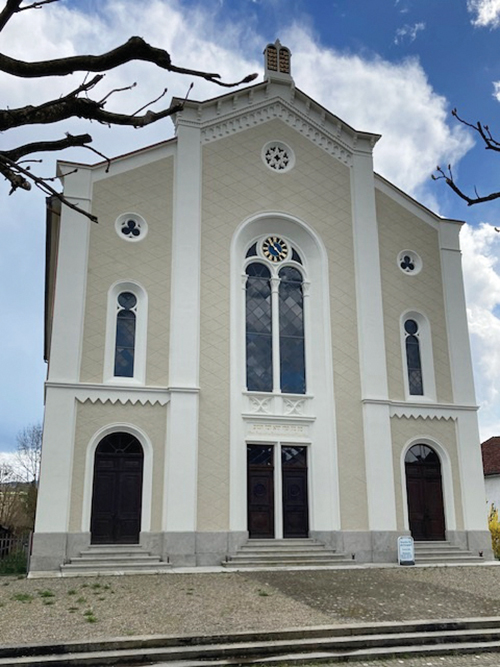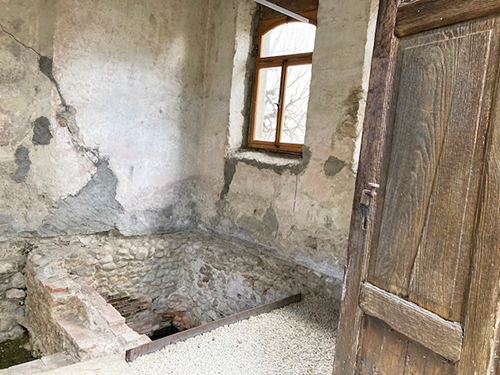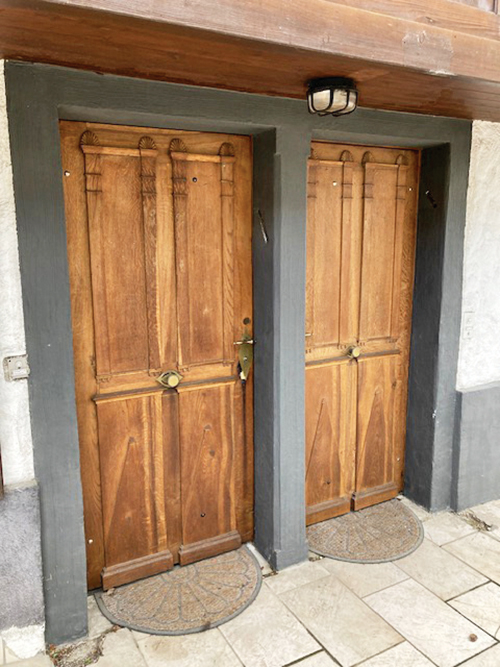
A fascinating movement is afoot in many of the countries I have recently visited. Malta, Morocco, Turkey—and now Switzerland—are just a few that come to mind.
Independent foundations and sometimes even government-sponsored organizations are making an effort to recapture the connection to their country’s ancient Jewish heritage. Is there a reawakening to the contributions that Jews made to their country’s development, a universal guilt, or is it simply a matter of memorializing the lost history of what was once a major ethnic presence that is gone forever?
A recent trip to Switzerland is a case in point. Jews first arrived in Switzerland at about the first to the sixth century when the area was under the Roman Empire. They traveled with the legions to supply them with horses and other goods. But once the empire collapsed and the legions withdrew, Jews were banned from permanent residence in any of the Swiss cantons (regions).
An exception was made in Basel during the early 13th century, when the city allowed a small number of prosperous Jews ingress, providing they would lend funds to build a bridge over the Rhine River. Détente ended with Jews being blamed for the plague that was decimating Europe, and by 1349 they had all been executed or exiled and Jewish return banned.

Based on cemetery gravestones, there is some evidence of a Jewish presence in the Surbtal (Surb River basin) farming communities outside of Basel in the early l7th century. But it was not until 1776 that, thanks to the French Revolution and the Napoleonic edicts, Jews were given permission to permanently settle and conduct business in the two small villages of Endingen and Lengnau—barely two miles apart—called the Jewish villages.
This was the only location in Switzerland that Jews were allowed to reside during the 100 years from 1776 to 1866—curiously at the very same period of time during which the United States was framing its constitution of equality without regard to religious affiliation.
In the Jewish villages they enjoyed relatively free movement but were prohibited from owning land or building homes. Ever resourceful, the two communities of Christians and Jews circumvented the building prohibition with the more-affluent Jewish families lending money to their Christian neighbors to build homes with the agreement that half of the home would be rented to a Jewish family. The edict against Jews and Christians living together was made legal by dividing the building in two with separate doors for each family. Ergo, the Doppeltur (double door) principle. Whether this is a legend or a true representation of circumstances, the double door became symbolic of religious coexistence. To this day, many homes retain their double doors with the right doorpost scarred, evidence of a mezuzah that had been removed.

Initially Jewish cemeteries were forbidden on the mainland and were relegated to an island in the Rhine between Germany and Switzerland called Judenäule (“Jews’ island”), which often flooded. Petitioning the Aargau canton for a more secure final resting place, Jews were allowed to purchase land on a hill between the two cities and dedicate a cemetery in 1750. Sadly, for much of the 19th century the two Jewish communities were at odds with one another, so the cemetery was laid out like the homes with two entry doors: one for Lengnau the other for Endingen residents … dead or alive. The cemetery is still in use today and remains the oldest and one of the largest Jewish cemeteries in Switzerland with over 2,950 interred souls, including those moved from Judenäule. Traditionally, Jewish deceased are interred with their feet facing east; for some reason lost to history the burial sites in the Endingen-Lengnau Cemetery are arranged north to south.
The Surbtal Valley was a poor farming community lacking even the ubiquitous village church, de rigueur in all Christian villages. As Jews gained in population, permission was given to build a formal synagogue in Lengnau in 1847 and to expand the existing small building used for worship in Endingen in 1852. The still-standing, beautifully maintained synagogues are a rose-and-cream Romanesque-style building in Lengnau and an austere neo-classical façade with Moorish features in Endingen.
Being the only houses of worship—even prominence—in the two villages, they both had the unusual addition of a clock on their façades. And in Endingen, a bell tower—the only synagogue in all of Europe to have one—was added to call the Jewish population to worship and also to alert the entire population to the daily needs in a farming community. At one time in Lengnau there was a Jewish school; a mikvah reserved for women only; a matzah bakery; and by 1903 a Kosher Jewish Home for the Aged, which is still in use today although the population consists mainly of non-Jewish boarders.

By the 1850s the Endingen Jewish community exceeded that of the Christian population; regardless, the synagogue was still relegated to a back alley instead of the prominent position held by the Lengnau Synagogue, which was positioned on the main square. They also had a Jewish school, a kosher slaughterhouse and a mikvah. It still stands today in a small stone building over the Brunnenwiese River, which runs through the town and presumably was the source of the living waters that a mikvah requires. The building was recently acquired by the foundation.
For over 400 years the Jewish population of the tiny hamlets survived, but by the late 19th century, as Jews were given greater freedom, they began moving to larger cities and faraway places like Amsterdam, Paris, London and New York. Many prominent Jewish families such as Guggenheim, Wyler and Dreifuss came from the Jewish villages of Endingen and Lengnau.
Once most Jews had left seeking greater opportunity, the memory of their presence was fading away. In order to preserve this unique history, in 2009 the Doppeltur or Double Door Association was created by the remaining Jewish community and representatives of the municipal councils of Lengnau and Endingen, as well as specialists in local history. They established an information center next to the Lengnau Synagogue—where the historic story currently unfolds in a video presentation and a brochure published by The Aargovian Heritage Society—and launched the Jüdischer Kulturweg (Jewish Heritage Path), a well-marked tourist trail that connects the two villages’ Jewish sights including the cemetery. The Heritage Path is on the UNESCO list of “Living Traditions,” and the project is supported by the Swiss Federal Office of Culture.

As the project expanded, The Doppeltur Foundation was established in 2022 to manage the financial requirements. Currently underway are plans to convert the center into a three-story cultural complex to educate, inform and recount the history. To get the project underway there was an initial contribution from the Aargau canton, with additional funds having already been raised from numerous foundations, companies and private individuals. The project is scheduled to be completed by 2024/2025 and will revitalize the entire area as a cultural destination.
A prominent member of the board of the association Doppeltur is Roy Oppenheim, a former chief cultural producer for Swiss television, who co-initiated the project and today is heavily involved in its development. We met with Oppenheim on our recent visit, and his enthusiasm for, and historical knowledge of, the project was outstanding. To quote Oppenheim: “Doppeltur tackles highly emotive themes such as religion and the coexistence of cultures. A section of the audience it addresses has little prior knowledge of the Jewish faith and the differences between, and commonalities of, Judaism and Christianity.” Hopefully the Doppeltur project will correct that lack and encourage positive feedback and greater understanding.

The center is not envisioned as a museum but a place to explore and encounter history at its original site. The Endingen Synagogue will continue to be used for worship while the Lengnau Synagogue will be open to the public due to its proximity to the center.
To learn more about the synagogues and the Doppeltur project, visit https://www.lengnau-ag.ch/_docn/1341506/flyer_englisch_JKW.pdf. and https://swissjews.ch/en/topics/culturalheritage/doppeltuer/
Barbara Angelakis is the co-owner and travel and culture editor for LuxuryWeb Magazine, a monthly lifestyles emag. For 20-plus years she has written extensively in LuxuryWeb and other publications about luxury destinations, culture and history, festivals and cultural events, gourmet food, and most recently Jewish heritage. Her study of art, history and cultural anthropology prepared her for travels around the world to destinations in Africa, Asia, Europe, North and South America, and most recently the seventh continent, Antarctica. She has been recognized for her outstanding coverage on Tanzania and awarded “Journalist of the Year” by the Tanzania Tourist Board and is the recipient of the MTA Malta Tourism Press Award.









